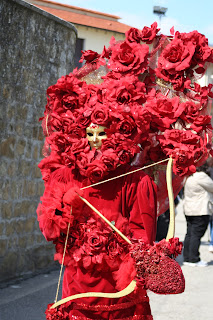for the pastry:
500 g flour
3 eggs
200 g butter
250 g sugar
half a bag of baking powder
for the filling:
2 pears
1 tablespoon of flour
1 tablespoon of almond flour
100 g sugar
1 tablespoon of milk
1 yolk
PREPARATION
Pour the flour on a pastry flour Add eggs and mix Add butter sugar and the packet of baking powder. In the mean time preheat the oven at 180. Mix quickly until the dough is quite elastic and compact. Form the dough into a ball, wrap it in a tea towel and place it in the refrigerator for at least half an hour. After half an hour, remove the dough from the refrigerator and roll out it on a lightly floured pastry flour.
Take half of the obtained pastry. Place it on a baking pan. Meanwhile, prepare the filling, add a little more of milk if it seems too thick. Pour the mixture on the pastry and place over the pears cut into slices and cover with the remaining pastry. Bake at 200 and cook for about 20 minutes.
INGREDIENTI
Per la pasta frolla:
500 g farina
3 uova
200 g burro
250 g zucchero
mezza bustina di lievito
per il ripieno:
2 pere
1 cucchiaio di farina
1 cucchiaio di farina di mandorle
100 g zucchero
1 cucchiaio di latte
1 tuorlo
PREPARAZIONE
Mettere la farina aggiungendo uova e mischiare Aggiungere burro e zucchero, poi aggiungere bustina di lievito. Nello stesso momento pre-riscaldare il forno a 180 gradi. Mischiare velocemente finché la mistura non è elastica e compatta. Fare una palla della mistura e mettere in uno straccio lasciando riposare la pasta nel frigorifero per almeno 30 minuti.
Prendete metà della pasta frolla ottenuta. Sistematela su una tortiera. Nel frattempo preparate il ripieno, aggiungete ancora un po' di latte se vi sembra troppo denso. Versate il miscuglio sulla pasta frolla e poggiatevi sopra d pere tagliate a fettine e coprite con la restante pasta frolla. Infornate a 200 e fate cuocere per circa 20 minuti.
Segui Tuscany in a nutshell su Google+



















